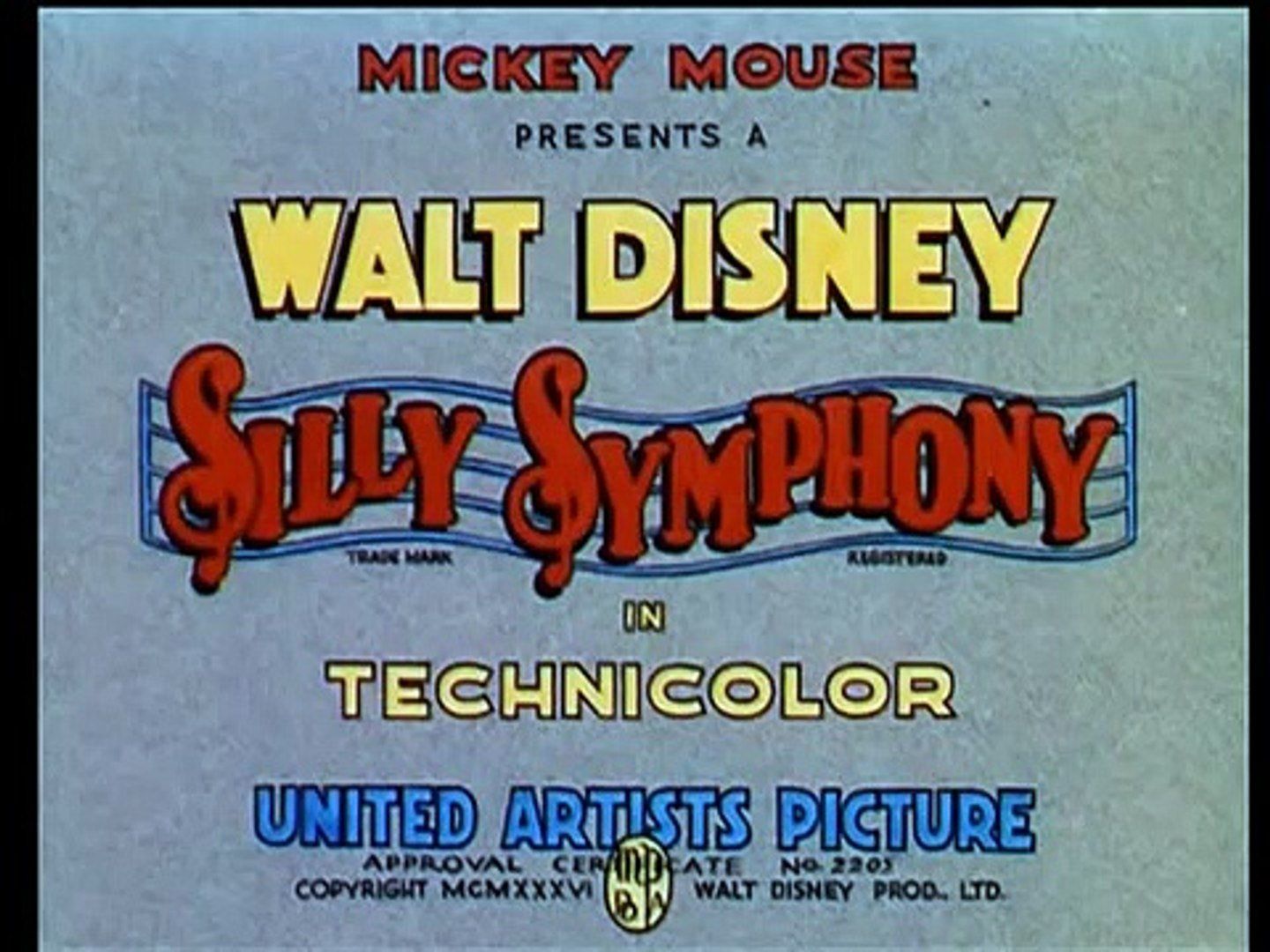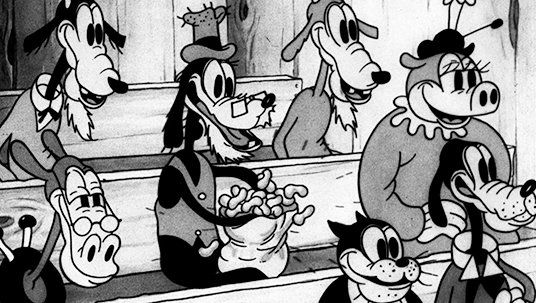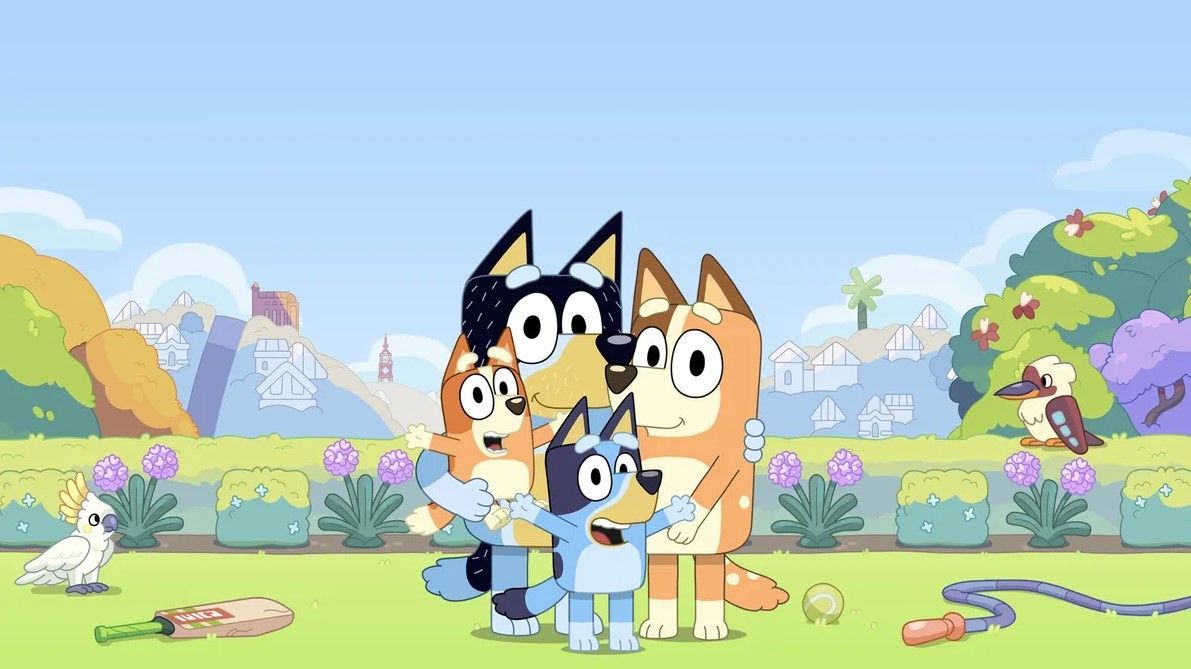Craig D. Barton is a creative consultant, editor, and writer, having written for and consulted on multiple Disney Editions books and various other projects. Besides being a self-described "DisNerd," Craig is an advocate for all arts, loves travel, movies, making his own eclectic music playlists, and, most of all, spending time with his family. Craig currently resides in Avondale, AZ with his lovely wife, quirky daughter, and neurotic yet lovable dog.
1932 - Now In Technicolor!
by Craig D. Barton
"The Walt Disney Company: 100 Years in 100 Weeks," is the brainchild of Craig D. Barton, presenting weekly posts on the history of the Walt Disney Company. Each post will cover a specific year in Disney's history, featuring essays, shared articles, guest authors, and yearly timelines, all leading up to the company's 100th Anniversary on October 16, 2023. Previous posts in the series can be viewed here..
Be sure to join us every Friday for the newest installment of "The Walt Disney Company: 100 Years in 100 Weeks!"
After less-than-stellar distribution deals with Charles Mintz and Pat Powers, Walt and Roy O. Disney felt that a contract with a more established studio such as Columbia Pictures would give them more solid ground to stand on, helping them to improve both the quality and financial standing of the Disney Studios. However, Columbia had put a large amount of money in a defense fund should Powers ever attempt to sue over the rights to Mickey Mouse distribution (as he had threatened), and the bottom line came down to the fact that proceeds from Mickey shorts were non-existent by the time Columbia had taken their share. Despite the huge success of both Mickey and the Silly Symphonies, the Walt Disney Company was still struggling to turn a profit. When Roy proposed a new contract to Columbia, asking for a fifteen-thousand-dollar advance for each short, the movie studio turned them down flat. Ever the deal maker and finance seeker that he would continue to be for years to come, Roy sought out a new distribution deal.
That new deal was found with United Artists. UA president Joseph Schneck not only offered Disney their advance asking price per cartoon, he sold them on the idea of United Artists being exactly the partner they had been looking for. “You are producers,” he told Walt and Roy. “We are a company of producers. We will sell your cartoons on their own (Columbia had been selling Disney cartoons in bundles with other companies’ cartoons as ‘loss leaders’ in order to unload less profitable product.). We don’t sell any other shorts, so your product won’t be released with a bunch of others in block-booking. We’ll give you fifteen thousand dollars advance on each cartoon. We also have a close connection with the Bank of America, and we can help you get financing,” Beyond being a better business deal, Walt also was attracted to the offer due to the prestige of United Artists. To be in league with some of the biggest stars of their day – Mary Pickford, Douglas Fairbanks, and of course Charlie Chaplin (Who, according to biographer Bob Thomas, reaffirmed Walt in his belief that he needed to be the owner of all of his pictures) – showed that Disney was a major presence in the elite of Hollywood.

Note the wording on the title card. United Artists was less interested in the Silly Symphonies, but "Mickey Mouse Presents" was a great compromise and calling card.
Now Walt was ready to take another huge step in the world of animation.
Herbert Kalmus, co-founder and president of Technicolor, Inc., wanted to bring the company’s new three-strip Technicolor camera into the film industry for testing, and felt that the animation field was the best place to start before introducing the technology to the motion picture industries. Walt became instantly smitten with the idea; Roy took convincing. As would be a repetitive scenario for the brothers, Roy argued cost – in this case, the company had just entered into a new deal with United Artists. To start off on an expensive venture could spell financial ruin. They couldn’t just ask for even more money off the bat, and the process of filming in color was a risky gamble – Roy wasn’t even sure the colored paint would adhere to the celluloid! Walt, as usual was undeterred, convinced that’s color was the wave of the future and that, even if it cost everything they had, the end process would be so spectacular that not only would income flow, but the Silly Symphonies would gain new life beyond that of the “step-sister” to the more successful Mickey shorts. In a sheer move of genius, Walt convinced Technicolor to agree to a two-year exclusivity deal for the three-strip process.
“Flowers and Trees” was already in progress as a black-and-white Silly Symphony, but also seemed like the perfect place to introduce technicolor. The process was painstaking, time consuming, and costly. Roy had been right about his fears of paint chipping, but Walt worked with his animators and laboratory technicians to develop an adhering paint for the process. A new camera stand was constructed in order to photograph the cels in color. Pouring all finances into the project, “Flowers and Trees” could have been the venture that stopped the studio from, pardon the pun, blooming further.

Flowers and Trees and Rainbows - Oh My!
After a few scenes had been completed, Walt took about a minute’s worth of footage to magazine publisher Rob Wagner. What Wagner saw was enough for him to invite Sid Grauman to see these test scenes. Upon viewing, Grauman immediately requested that he be able to release “Flowers and Trees” at his Grauman’s Chinese Theater as an opening to the newest Clark Gable and Norma Shearer film, “Strange Interlude.” In order to meet the release date, Walt had his animators work rapidly on the process, readying it ahead of schedule for a July 1932 debut.
Walt’s foresight, as it had been with sound cartoons, was once again right. The short was a huge success, shining bright colors for the moviegoing world to see. Colors on a screen that had, up until now, shown shades of black, white, and gray, were shining with the green tops of trees and fiery reds and oranges of fire against a blue sky. It’s easy to look back now and see how important the advent of color on film had been, but to filmgoers experiencing it for the first time, it had to be nothing short of jaw-dropping. “Flowers and Trees” breathed new life into the Silly Symphonies – demand for “Flowers and Trees” was equaling that of a Mickey Mouse cartoon. Fans and critics alike were wowed, and the film was rewarded with the first ever Academy Award for Best Animated Short Subject.

That Dippy guy looks a little goofy if you ask me....
Of course, Mickey was still as popular as ever. His short films drew in audiences, and with the addition of a “Dippy Dawg,” the stable of recurring characters grew. Mickey’s star power also brought Walt an honorary 1932 Oscar for his creation, making Walt a double winner that year. He also was the studio’s shining merchandising star, and in 1932, Disney signed a contract with Herman (Kay) Kamen to represent the company in its merchandise dealings. One of the first dealings in this partnership was an order of ten million Mickey Mouse ice cream cones, but it wouldn’t be the last. In the coming years, Mickey would become recognized for being the little mouse that could, with deals that pulled companies such as Lionel (Toy Trains) and the Ingersoll watch company out of bankruptcy or dissolvement.

The Lionel Mickey Mouse Hand Car, which almost single-handedly pulled Lionel out of bankruptcy in 1934.
In an era of The Great Depression, his star was shining and giving hope. Little did anyone know that the following year would bring another beacon of hope in the depression, or at least a wonderful theme song…
1932
- United Artists begins distributing animated shorts
- Disney signs contract with Herman "Kay" Kamen to represent Disney in merchandise dealings.
- Silly Symphony short “Flowers and Trees” debuts as first full-color cartoon.
- “Flowers and Trees” wins Academy Award in brand new category of Best Short Subject, Cartoon
- Walt wins honorary Academy Award for the creation of Mickey Mouse
- Goofy Debuts as “Dippy Dawg” in “Mickey’s Revue” (May 27)
1932 Animated Releases:
Silly Symphonies - The Bird Store - January 16
Mickey Mouse - The Duck Hunt - January 28
Mickey Mouse - The Grocery Boy - February 3
Mickey Mouse - The Mad Dog - March 5
Mickey Mouse - Barnyard Olympics - April 18
Mickey Mouse - Mickey's Revue - May 27
Mickey Mouse - Musical Farmer - July 11
Silly Symphonies - The Bears and Bees - July 15
Mickey Mouse - Mickey in Arabia - July 20
Mickey Mouse - Mickey's Nightmare - August 8
Silly Symphonies - Just Dogs - August 12
Mickey Mouse - Trader Mickey - August 26
Silly Symphonies - Flowers and Trees - September 9
Mickey Mouse - The Whoopee Party - September 16
Silly Symphonies - Bugs in Love - September 21
Silly Symphonies - King Neptune - October 7
Mickey Mouse - Touchdown Mickey - October 7
Mickey Mouse - The Wayward Canary - October 28
Mickey Mouse - The Klondike Kid - November 18
Silly Symphonies - Babes in the Woods - December 2
Mickey Mouse - Mickey's Good Deed - December 9
Mickey Mouse - Building a Building - December 20
Silly Symphonies - Santa's Workshop - December 30
Silly Symphonies - Birds in the Spring - December 30
*"The Walt Disney Company: 100 Years in 100 Weeks" is a project conceived by Craig D. Barton and presented by Communerdy. It is in no way affiliated with The Walt Disney Company, and any opinions presented within its content are that of the author(s). For more updates, follow us on https://www.instagram.com/disney100in100/ .




